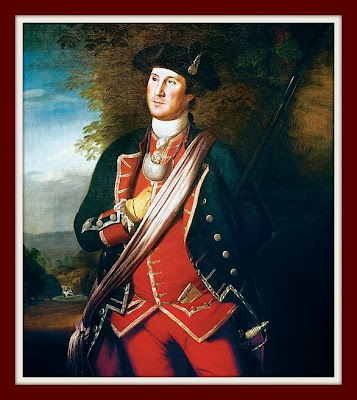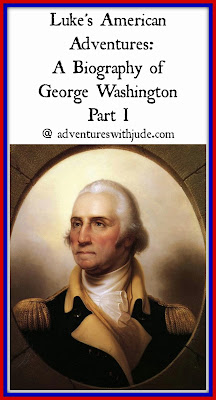1. George William Washington was born in 1732, the son of iron furnace and farm owner Augustine Washington. He had two half brothers, Lawrence and Austin, from Augustine's first marriage. He did not meet them until they returned from school in England; George was six when he first was introduced to Lawrence. George's mother, Mary Ball Washington, was overcautious and controlling, often at odds with her son's drive for adventure. When Lawrence returned from his schooling in England, he was given Epsewasson farm to manage, and George and his younger siblings relocated to Ferry Farm, a short distance away.
 |
| Ferry Farm (Library of Congress, Public Domain) |
2. George's father died when George was only 11 years old. Traditionally, a man's entire estate was left to the eldest son, but Augustine divided his holdings amongst his older sons, with each receiving a farm. George's brother Lawerence inherited Epsewasson farm (now called Mount Vernon), Austin Washington inherited Wakefield, and George inherited Ferry Farm. However, because George was still a minor, his mother was given control of the estate for the next ten years. She not only controlled the farm, but George as well, forbidding him to go to England to be educated as his brothers were and insisting George assume his father's role of "man of the house" to his five younger siblings immediately. Lawrence and his new wife, Anne would often find excuses for George to visit them so he could escape the adult responsibilities and have time to be a child again.
 |
| Major George Washington Charles Willson Peale [Public domain] |
4. George Washington was appointed an adjunct of the Virginia Colony. The new Major Washington was ferrying messages to Fort le Boeuf, a French outpost in the Ohio Valley during the French and Indian War. He and his translator, Christopher Gist were betrayed by their Native American guide. Most of the Natives sided with the French; only the Iroquois were consistently allies to the British. Though he was not one of the Iroquois, they thought they could trust this friendly man to be their guide. As they were traveling, the guide shot at Gist, narrowly missing him. Gist and Washington disarmed the Native. Although Gist wanted to kill him outright, Washington convinced Gist to let the man go, telling him to head north and if they saw him again, they would kill him. They did not trust that he would not return, so instead of much needed rest, Gist and Washington continued on walking for a full twenty-four hours.
5. Major Washington was part of General Braddock's army that charged at Fort Duquesne. However, before they could reach the French fort, the battalion was ambushed by guerilla Indians. General Braddock made a terrible situation worse by ignoring Major Washington's suggestion that they retreat to the woods and fight in the same manner. Braddock demanded his men return to a marching formation. The French came from the fort and entered the battle. Between their bright red coats and their open position, Braddock's forces were easily decimated by the French and Indians hiding in the woodland canopy. Out of the 1,373 British soldiers who entered the battle, 914 were killed or wounded, including General Braddock. Washington himself barely missed being killed; his horse was shot out from under him, and he counted four bullet holes in his coat and a fifth in his hat. For his bravery, Governor Dinwiddie promoted Major Washington to Colonel Washington, despite the King's ban on promoting colonials to the rank.

A Biography of George Washington: Part II can be found here.

Part III of A Biography of George Washington can be found http://www.adventureswithjude.com/2013/09/a-biography-of-george-washington-part-ii.html
©2012- 2013 Adventures with Jude. All rights reserved. All text, photographs, artwork, and other content may not be reproduced or transmitted in any form without the written consent of the author. http://adventureswithjude.com



What a great deal of well-written information, Luke! I learned a lot :)
ReplyDelete